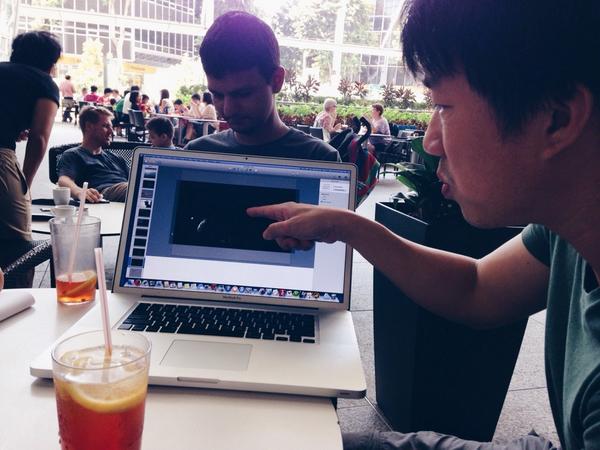I occasionally function as performer-poet,
writer-researcher, activist-curator, and at other times, read poetry to myself
while undesirably occupying public spaces.
2. How did you end up in Curating Lab?
2. How did you end up in Curating Lab?
A rave, a rant, a referral, but also, delusions of grandeur.
3. What has been your most poignant moment of Curating Lab so far?
3. What has been your most poignant moment of Curating Lab so far?
Best moment: seeing a Queer Film in Ten Million Years of
Yearning: Sex in Hong Kong, about a love story between a girl and a
paper-eating ghost. The absurdity of the girl getting angry at the ghost and
saying, “Do you mind asking me first before you eat my diary?” compounded with
realizing that there is space for things I want to curate: space that is
community-focused, political, performative, reformative, beautiful.
4. Tell us about the projects you are involved in.
4. Tell us about the projects you are involved in.
Aside from curating, I am part of a four-woman poetry
troupe, Sekaliwags. I am currently teaching a series of creative-writing
workshops focused on gender-based violence entitled “Body/Language” with AWARE.
We have been conducting these workshops with various groups: volunteers at
H.O.M.E, participants of a Malay Muslim support group Gender Equality is Our
Culture and LGBTQ youth group G-Spot, among others. I am also working on a
documentation of violence and discrimination against LBTQ people with Sayoni.
5. What should I look out for in the next few months (Jan-Mar)?
5. What should I look out for in the next few months (Jan-Mar)?
Wonder. Look twice before you cross the road. Look twice
before you criticize. Jan to March will be a time for reflection. More events,
especially Sekaliwags-related coming in June / July.
6. How has being in a curating programme changed how you approach your work?
6. How has being in a curating programme changed how you approach your work?
It’s expanded my field of vision, given birth to new
possibilities, a new way of approaching space, object, sentiment, ressentiment.
7. Favourite book.
7. Favourite book.
Skepticism, Inc. by Bo Fowler. It’s about a sentient
supermarket trolley that tries to climb Mt Everest while his best friend starts
a metaphysical betting service and tries to conquer the world.
8. Favourite artwork.
8. Favourite artwork.
9. Current favourite poet.
Anything Warsan Shire.
10. Favourite local art space.
The Substation.


















.JPG)




































